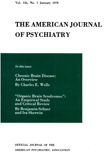The brain as a dream state generator: an activation-synthesis hypothesis of the dream process
Abstract
Recent research in the neurobiology of dreaming sleep provides new evidence for possible structural and functional substrates of formal aspects of the dream process. The data suggest that dreaming sleep is physiologically determined and shaped by a brain stem neuronal mechanism that can be modeled physiologically and mathematically. Formal features of the generator processes with strong implications for dream theory include periodicity and automaticity of forebrain activation, suggesting a preprogrammed neural basis for dream mentation in sleep; intense and sporadic activation of brain stem sensorimotor circuits including reticular, oculomotor, and vestibular neurons, possibly determining spatiotemporal aspects of dream imagery; and shifts in transmitter ratios, possibly accounting for dream amnesia. The authors suggest that the automatically activated forebrain synthesizes the dream by comparing information generated in specific brain stem circuits with information stored in memory.
Access content
To read the fulltext, please use one of the options below to sign in or purchase access.- Personal login
- Institutional Login
- Sign in via OpenAthens
- Register for access
-
Please login/register if you wish to pair your device and check access availability.
Not a subscriber?
PsychiatryOnline subscription options offer access to the DSM-5 library, books, journals, CME, and patient resources. This all-in-one virtual library provides psychiatrists and mental health professionals with key resources for diagnosis, treatment, research, and professional development.
Need more help? PsychiatryOnline Customer Service may be reached by emailing [email protected] or by calling 800-368-5777 (in the U.S.) or 703-907-7322 (outside the U.S.).



